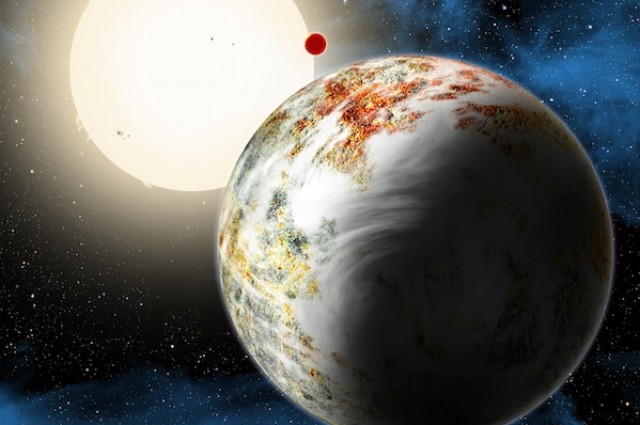17/06/2014
Among the haul of hundreds of new planets discovered by the Kepler Space Telescope, many have qualified as super-Earths -- worlds that are several times larger than Earth, are rocky like our own, and reside in the habitable zones of their stars. But never before had scientists detected a world like Kepler-10c, a "mega-Earth" that looks a lot like home but is 17 times heavier than our planet.

When Kepler first spied this new planet, astronomers measured its diameter to be 29,000 kilometers, or about 2.3 times larger than Earth's. That would have been remarkable, but not recording-setting. However, when scientists from the Harvard-Smithsonian Center for Astrophysics (CfA) looked at Kepler-10c using the Telescopio Nazionale Galileo in the Canary Islands, they measured the planet's mass and found it to be so heavy that it must be made of rocks and other dense materials.

Prof. Dr. Ersin Göğüş
On the discovery of Kepler 10-c, Professor Ersin Göğüş, an astrophysicist and a member of the Sabancı University Faculty of Engineering and Natural Sciences, commented: “The new findings are capable of expanding the horizon for habitable exoplanet research. We are now one step closer to discovering traces of life in a distant corner of our galaxy.”
Kepler-10c orbits a star similar to the Sun, located about 560 light years from here. It completes an orbit once every 45 days. And this new finding announced today about its mass could have profound impacts on the search for life out there among the stars.
Scientists would have thought that any planet as heavy as Kepler-10c would be a gaseous world such as Jupiter and Saturn. Indeed, many of the first exoplanets to be discovered were "hot Jupiters" -- gas giants located close to their stars. But life as we know it needs to live on a hard, rocky planet or moon. The discovery of such a gigantic rocky world opens up the possibility of many more potentially habitable planets throughout the galaxy.
Furthermore, new research proposes a link between how long it takes for a planet to orbit its star and how large a rocky planet can grow. That would suggest rocky planets can be bigger the farther you get from the star. If this correlation is true, it would mean that astronomers will find even more mega-Earths as they search for exoplanets with longer orbital periods. (Many of the worlds newly discovered by Kepler are relatively close to their stars.)
This new mega-Earth also means that astronomers could look to very old stars for potentially habitable planets. Kepler-10c orbits a star that formed just 3 billion years after the Big Bang, and scientists had thought it make taken the first few billion years of the universe's existence just for exploding stars to form enough heavy elements for rocky planets to form.
"Finding Kepler-10c tells us that rocky planets could form much earlier than we thought. And if you can make rocks, you can make life," lead researcher Dimitar Sasselov says in a press release.
The work was presented at the 224th meeting of the American Astronomical Society (AAS) in Boston.
[Via Harvard-Smithsonian Center for Astrophysics]
Image: David A. Aguilar (CfA)
News: Janet Fang
For more information:
Prof. Ersin Göğüş
Sabancı University
Faculty of Engineering and Natural Sciences
Tel: +90 (216) 483-9590
email: ersing@sabanciuniv.edu


